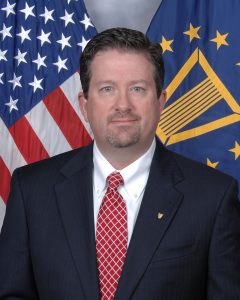The Defense Logistics Agency (DLA) supports the U.S. military’s combat logistics worldwide, so it cannot spare many delays. The explanation is simple – when it comes to war, lags can mean the difference between life and death. Preserving agencywide resilience, then, ranks as one of DLA’s highest concerns.
According to Vice Director Brad Bunn, this dichotomy has made resilience part of DLA’s DNA. With about 26,000 employees operating in most states and 28 countries overseas, the agency currently provides more than $42 billion in goods and services annually. This translates into roughly 86% of the military’s spare parts and nearly 100% of its fuel and troop support consumables, making DLA’s resilience indispensable to how America’s armed forces live, work and fight.
GovLoop spoke with Bunn about how resilience propels the agency’s mission at home and abroad as part of a larger project exploring resilience in all levels of government.
The interview below has been lightly edited for brevity and clarity.

DLA Vice Director Brad Bunn
GOVLOOP: How can people create a culture of preparedness making their agency more resilient?
BUNN: It goes to the focus we put into understanding what makes our workforce tick and what drives our culture and climate in the agency. We’ve had a robust culture climate program for many years. It gets to things in our organizational culture we can diagnose, pinpoint and act on. Are we preparing our workforce to be adaptable and agile? There is a portion of our culture model that deals with being able to adapt to change and change management. As a combat support agency, we’re constantly adapting to what our customers want and what our leadership and DoD is driving toward. We must be a dynamic and innovative organization. Hopefully, we’re not just meeting our requirements, but exceeding them.
We’ve built that into our leadership training and development. We’ve built that into what we call our culture climate action plans. Those are heavy with communication with the workforce, some amount of training and development that builds that competency within our workforce and then certainly in our actual mission plan.
These are things that any organization, any institution, ought to focus on. Because of our reach, these things become especially important to accelerate our ability to adapt. There is constant looking in the mirror and seeing where we need to add focus.
How can improving your agency’s processes boost DLA’s resiliency?
There’s good news and bad news with our processes. I won’t call them rigid, but they are very structured and repeatable. We are a heavily process-oriented organization. Those processes are reflected in our IT systems and financial processes.
The good news is those processes can be executed in 100 different ways regardless of whether we’re in the office or 100% virtual, if that IT is operational. It’s not just how the system works. It’s why the system works the way it works. If we do have a disruption, we can still perform those operations even if it is in a different way.
We have standardization across most of our business units. Whether it is IT or something else, if we need another business unit to pick up some workload, we can move that workload to that unit and the same processes still exist. Process management is important for several things. It also ensures we are auditable and accountable and our customers understand how we do our business.
What are some best practices for resilience you’d recommend to other agencies?
In a military sense, resiliency is usually focused on the individual and ensuring they have resources at their disposal to deal with not just crises in their personal or professional lives, but the things that add stress.
The best way to prepare for something is to practice how you’d respond if it happened. We try to do that at DLA. When you practice that, people become more comfortable with adapting to a quick change in their environment. They’re not so unaccustomed to having to work in a different way.
We were able to move quickly to telework because we had practiced it for so long. Not every future natural disaster or other type of crisis will cause the same thing. It could be we don’t send everyone home to work. We may need to relocate some folks to another place. The DLA practices both kinds of continuity of operations exercises.
There’s not much more important work out there than supporting our military and what they do. What I’ve seen over the past year with our people, even though they’ve dealt with stress – and, in some cases, tragedy in their personal lives – what keeps them focused is the mission. Having a purpose and being part of something bigger than themselves is a great motivator. That’s one area where we have an advantage over the private sector. It’s easy to get really attached and invested in the mission we perform for our nation. That’s what drives our people to go above and beyond.
This interview is from GovLoop’s upcoming guide, “Reaching Resilience: Your Agency’s Disaster Response and Recovery.”





Leave a Reply
You must be logged in to post a comment.